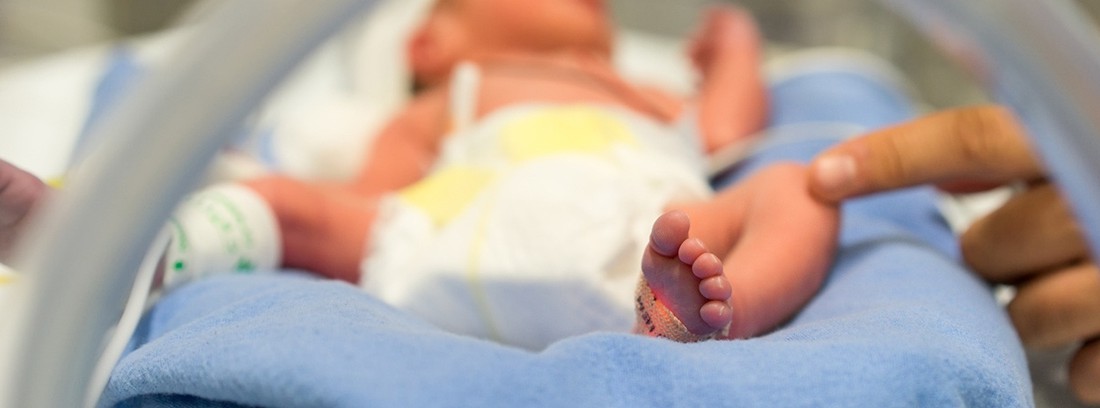Neonatal pneumonia
 It is a serious infection in the newborn and consists of the inflammation of lung tissue, specifically, from the alveolar sacs, caused by infectious agents, such as bacteria and viruses. We can classify pneumonia of the newborn in:
It is a serious infection in the newborn and consists of the inflammation of lung tissue, specifically, from the alveolar sacs, caused by infectious agents, such as bacteria and viruses. We can classify pneumonia of the newborn in:
Congenital pneumonia
The microorganism is acquired by transplacental route (through the placenta), that is, lung infection is just a complication of a severe generalized infection. It is a serious situation in the newborn.
Intrauterine pneumonia
The bacteria or virus reaches the respiratory system through the mouth from the maternal genital tract. This type of pneumonia is associated with amniotic fluid infection due to premature rupture of the membranes or with a genital infection of the mother. These two circumstances can also occur together: genital infection and ruptured membranes.
Differentiating an intrauterine pneumonia from a congenital one is very difficult since, clinically, they give the same symptoms and radiologically as well. It is for this reason that many authors equate the concept of congenital and intrauterine pneumonia.
Pneumonia acquired during childbirth
The infectious agent reaches the lung through the oropharynx when the baby aspirates maternal secretions from the birth canal or amniotic fluid contaminated. It is related to premature rupture of membranes and fetal distress during birth.
These three pneumonias are called to develop during the first three days of life and in which the origin of contagion is maternal. The most frequent cause is bacteria (group B streptococcus, listeria, and tuberculosis) but can also be caused by somevirus(herpes virus) andmushrooms ).
Postnatal pneumonia
The cause is external and its most frequent origin is nosocomial, that is, it is caused by germs from the hospital environment. The use of invasive procedures (venous lines or accesses, probes, respirators ...) used in intensive care units are its main cause to which is added the natural immunosuppression of the newborn and its vulnerability, which makes it prone to having serious infections
This type of pneumonia can also be community origin, that is, it can be caused by microbes that are in the community (outside the hospital) and whose transmission is due to contact with family members.
Is a late-onset pneumonia, which occurs during the newborn's hospitalization or after hospital discharge. Newborns with endovenous catheters and endotracheal tubes are at higher risk for this type of infection. Most are bacterial pneumonia, although they can also be viral or fungal. In the case of late-onset viral pneumonias, the origin of the infection is a sick relative. The most common virus is VRS (respiratory Syncytial Virus).
Symptoms of pneumonia in babies
All these pneumonias of the neonatal period have similar symptoms and they are serious. One of the first warning signs is:
- Shortness of breath
- Refusal to feed with difficulty sucking
- Tyou
- Mucus
- Fever
- Bad look
Although it is a localized infection in the lung, since the newborn is immunosuppressed (they have a very immature immune system), it can spread rapidly and progress very aggressively developing an infection spread throughout the body () in the first few hours of life.
Treatment
Treatment always involves the and should be started antibiotic treatment as soon as possible to avoid complications. The antibiotic it will depend on the type of microorganism that grows in the cultures. If the lung involvement is very severe, the newborn may need respiratory support or mechanical ventilation. It is not until the newborn is fully recovered that he is discharged from the hospital.
- It is a serious infection in the newborn and consists of inflammation of the lung tissue, caused by viruses or bacteria.
- One of the first warning signs is shortness of breath and refusal to feed with difficulty sucking.
- Treatment always implies hospital admission and antibiotic treatment should be started as soon as possible to avoid complications.
Pediatric Specialist
(Updated at Apr 14 / 2024)